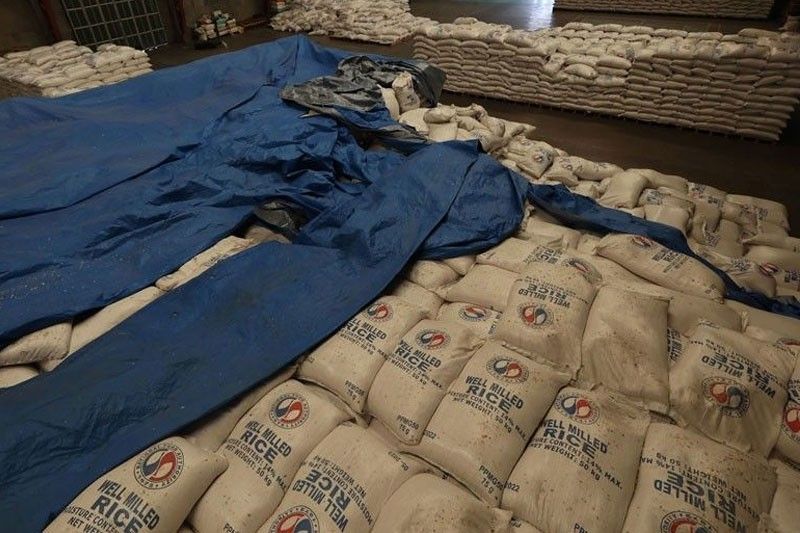‘Lift or cut rice tariff to bring down prices’

MANILA, Philippines — Tariffs on rice imports should either be lifted or reduced instead of imposing a price ceiling as it hurts both consumers and farmers, according to the Foundation for Economic Freedom (FEF).
“We call on the government to lift or reduce import tariffs for rice from 35 percent to 10 percent to arrest the surging price of rice rather than impose a price ceiling,” the group said in a statement issued over the weekend.
President Marcos issued Executive Order 39 on Aug. 31, setting a price ceiling on regular-milled rice at P41 per kilo and well-milled rice at P45 per kilo.
The price cap will hurt low-income households and drive supply away from the market, fuel a black market for rice, cause traders to cheat consumers by mixing inferior broken rice with regular and well-milled rice and incentivize traders to hoard as the price ceiling is below their procurement and selling prices, the group explained.
Farmers will also suffer as traders could use the price caps to justify buying palay at a lower price or refuse to buy palay from farmers.
“The government can afford to lower rice tariffs because the mandatory P10 billion allocation for the Rice Competitiveness Enhancement Fund (RCEF) as stipulated by the Rice Tariffication Law has already been achieved,” the FEF said.
As for the farmgate price of palay, it could reach P15 per kilo due to EO 39.
This was the warning aired over the weekend by the Philippine Chamber of Agriculture and Food Inc. (PCAFI) after EO 39 set a price ceiling on rice amid its rising cost, which the group said could result in less income for farmers.
“Many farmers were hit by the typhoon which is why their expected harvest is not big. After the calamity, they expect to at least earn but with this, it is possible that they cannot break even,” PCAFI president Danilo Fausto said.
“If traders will buy their produce at P15 (per kilo), they will no longer plant in the next planting season, that is why the number one enemy of productivity is price control,” he added.
The price control should last for only a month to allow farmers to earn, Fausto suggested.
The National Economic and Development Authority also expressed support for EO 39, which it claimed will address hoarding, profiteering, smuggling and cartelization.
“We are confident that the imposition of a price ceiling is only a temporary measure. We expect the rice harvest to commence soon and anticipate that other initiatives will produce the desired result,” NEDA said.
EO 39 violators will face a penalty of P5,000 to P1 million, according to Trade and Industry Assistant Secretary Agaton Uvero on Sept. 2.
In an email, Pantheon Macroeconomics chief emerging Asia economist Miguel Chanco said that if prices are not “allowed to rise to their equilibrium market rate,” then the country could end up in a situation where there is excess demand and inadequate supply.
The government should assist retailers in complying with EO 39, according to rice traders’ group Philippine Rice Industry Stakeholders Movement (PRISM).
“Who will be affected here are the small businesses. They will shoulder the losses,” PRISM co-founder Orly Manuntag said in a radio interview.
“Section three of EO 39 provides assistance to retailers. We just don’t know what form of assistance, that is why we are asking the DA, the government on how they can help us,” he added.
Retailers were surprised by the decision as they had bought rice earlier at P2,300 per sack, which is equivalent to P46 per kilo, Manuntag noted.
Consumers to benefit
Consumers will immediately benefit from EO 39, according to farmers’ group Samahang Industriya ng Agrikultura (Sinag).
“From the current retail of P60 (per kilo), it will now become P45 (per kilo), definitely the consumers will benefit here,” Sinag executive director Jayson Cainglet said yesterday.
The Kilusang Magbubukid ng Pilipinas (KMP) on Sunday expressed concern over the affordability of rice, claiming that regular milled rice can still be reduced to P37 per kilo.
It also criticized the government for not taking decisive action against traders engaged in hoarding and price manipulation.
Agriculture Undersecretaries Leocadio Sebastian and Domingo Panganiban should be investigated by Congress, the group said.
Based on the DA’s monitoring, local regular milled rice is sold as high as P55 per kilo, local well-milled rice at P57 per kilo, local premium rice at P60 per kilo and local special rice at P65 per kilo.
Imported well-milled rice is sold as high as P52 per kilo, imported premium rice at P56 per kilo and imported special rice at P65 per kilo.
Reps. Edcel Lagman and Joey Salceda support EO 39.
Lagman and Salceda of Albay’s first and second districts, respectively, endorsed Executive Order 39. — Delon Porcalla
- Latest
- Trending

































